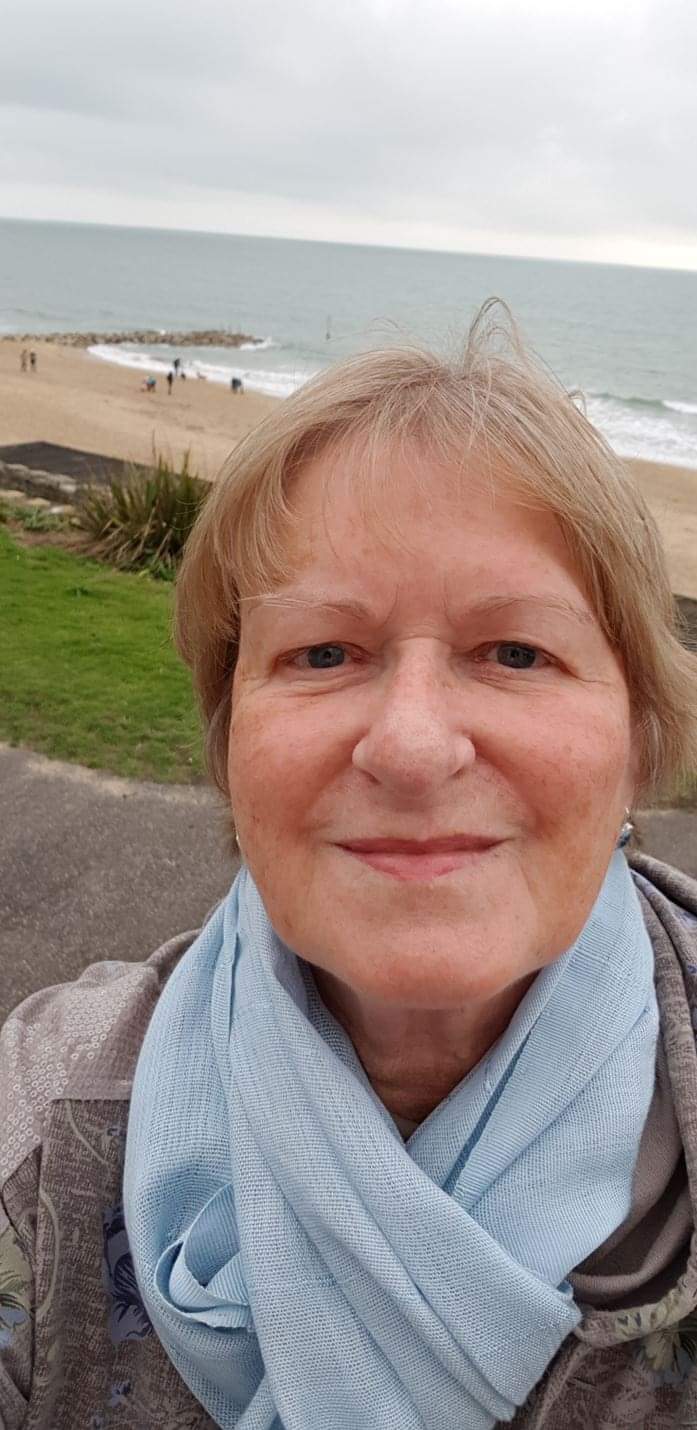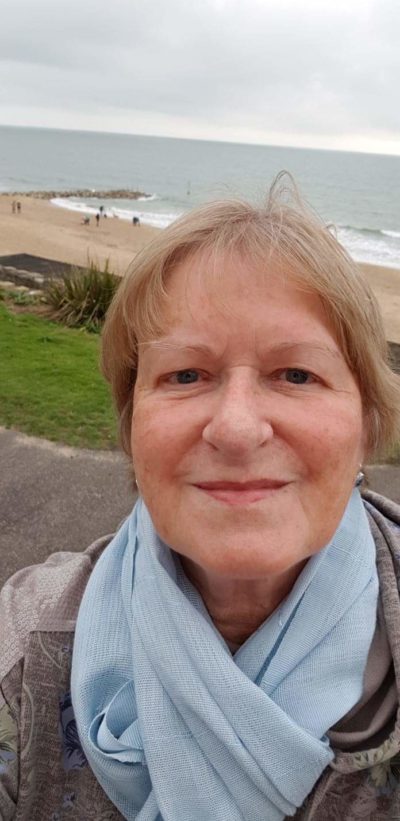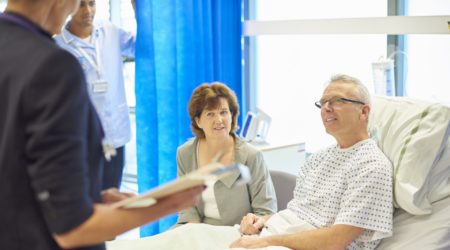



Sue
Sue was diagnosed with a benign IPMT (Intraductal Papillary Mucinous Tumour of the pancreas) in 2010. She regularly updates her story so that others affected by pancreatic cancer can learn from her experience.
First of all, I need to explain that all this happened when I was working in Belgium, so I went through the Belgian medical system, which was very good.
During 2009 I suffered from lumps on my lower left leg. At first my GP thought they were mosquito bites so treated them with a cream. Then, because I had had phlebitis in that leg during 1997, he decided it was linked to that and I had about 100 heparin injections. After that he tried a whole range of medicines but nothing worked.
Finally, in August 2009, when my GP was on holiday, I went to the doctor who did our medicals at work. She peered at the lumps (by now much bigger) and diagnosed pannicultitis. She told me to go to the dermatologist and have a biopsy of one of the lumps. This was done, and the lumps were diagnosed as erythema nodosum (inflammation of the fat cells under the skin), with evidence that the pancreas was involved.
Towards the end of 2009 I saw a consultant in Brussels. He got very excited and took photos of my leg, holding a ruler next to it, to show the dimensions of the lumps. He said my condition was very rare and he would be using the photos in his lectures for many years to come!
A diagnosis of IPMT
In November 2009, I was admitted to the same hospital for an endoscopy. This, together with blood tests and MRIs, showed that I had a tumour on the head of my pancreas.
In February 2010 I was admitted to the same hospital for a Whipple’s operation. The tumour had doubled in size within 3 months and my consultant feared it would be malignant.
During the operation, the surgeons removed the head of my pancreas, my gall bladder, 35% of my stomach, my pylorus and several metres of intestines. But I woke, in intensive care, to the good news that the tumour, an IPMT, was not in fact cancerous.
Recovering from Whipple’s
I stayed in hospital for 3 weeks. For 2 weeks I could not eat or drink anything at all. After that time I started to have small meals and to take Creon. I had lots of physiotherapy while in hospital and by the time I left I was quite strong.
I recuperated at home for 3 more weeks, gradually gaining in strength, and then went away on holiday.
After the operation I lost about 12kg in weight and I have regained about 7kg, but, as I now weigh 80kg and am only 5′ 6″, I am rather overweight, so that is a good result!
It is now 2 years later and I feel I have made a good recovery. While in Belgium, I had MRIs, blood tests, sometimes PET scans, and meetings with my surgeon every 6 months. Now that I am back in the UK, the British consultant says that is completely over the top for a benign IPMT and that he only needs to see me once a year!
I still get diarrhoea occasionally, despite taking Creon, and I do not have as much energy as before – but I still managed to do the Hadrian’s Wall long distance footpath last September!
March 2012
Update February 2014
I have now moved to another city to follow a Master’s degree in Translation Studies – life really does go on after a Whipple’s! A really good by-product of moving is that I have found a much friendlier consultant and a really brilliant GP. My previous GP and consultant had refused to test my levels of Vitamin D, despite my pleas that this is considered essential in Belgium. My new GP was only too happy to do this, the tests showed that my Vitamin D levels are very low, and the consultant set up an urgent appointment with him to discuss what to do. I am now on huge doses of Vitamin D and will be tested again in a couple of weeks.
What a great contrast with the ‘care’ I received in my previous UK location – and what a good lesson that we MUST PUSH HARD to get the treatment we need!
Update July 2015
Life is still treating me very well and I want to pass this good news on to others who have had a Whipple’s operation. I have very nearly finished my MA in Applied Translation Studies, just one more assignment, then I will start work as a freelance translator – at the age of 68.
In April 2014 I had an operation to repair an epigastric hernia, a small after-effect of the Whipple. The surgeon repaired the hernia laparoscopically so I just had a couple of tiny scars, and was in hospital for only two nights.
My surgeon will do an MRI every year until I am too old/fragile to undergo another operation on my pancreas. This is because my tumour was in the main duct.
I have blood tests every six months and my Vitamin D levels are closely monitored. I no longer need massive supplements but take a small supplement twice a day – and get as much sunshine as I can.
So, as you can see, there is indeed life after a Whipple’s!
Update May 2022
Since my last update in July 2015 my life has continued as normal. I have led an active retirement, travelled around Europe, and generally felt very healthy. During the pandemic I took sensible precautions and spent a lot of time walking along the beach with friends, in the open air.
Then, a couple of months ago, I started feeling tired. At first I wondered if my age was catching up with me. I will be 75 in July. Then, on a trip to London a couple of weeks ago, I had a sharp pain on the left of my tummy and extending to my lower back.
I went to my GP, who examined me but couldn’t find anything untoward. But I have been having blood tests and an MRI every year to monitor my pancreas. Usually they are in June but I asked if I could have the blood tests a bit early so they were done this week – and my CA 19-9 (the cancer marker) was sky high and other markers were also abnormal.
My GP called me in to see him as soon as he got my results and I decided that, though I now live in Poole, Dorset, I want to return to my wonderful consultant in Yorkshire for the scans and further treatment. The scans are being scheduled on the fast track, and his wonderful assistant has phoned a couple of times to check that I am ok.
It is 12 years since I had my Whipple and I have been lucky. I am feeling very positive and am physically in good shape to have another operation on my pancreas. I will update this story as events unfold.
But what I want people to learn from my experience is that if you don’t feel well after a Whipple go to your GP and get checked out. And find a consultant you trust and stick with him or her!
To be continued!
Update June 2022
It is now 5 weeks since I got the results of my blood tests and I have learned that my experience in post-pandemic UK will be very different from the treatment I received in Belgium in 2010!
I had an MRI at my local hospital on 4 June. This was requested by my GP as my annual scan. No results yet. I phoned the hospital to ask when I might expect the results and they replied that there are delays so I might have to wait several weeks.
My consultant in Yorkshire requested CT scans of my abdomen, thorax, pelvis and liver and I travelled up there last week to have the scans done. That experience has made me re-think my decision to have my treatment done in Yorkshire. While I have the utmost admiration for my consultant and his team, the practical difficulties are immense. There is no longer a direct flight so I took the train, which was delayed due to points failure so I arrived very late, and exhausted.
A friend who lives near me had a Whipple performed at our nearest specialist centre and speaks very highly of her surgeon so I am investigating the possibility of transferring my treatment there. However, nothing can be planned with any certainty without having the results of the scans.
I want to thank Pancreatic Cancer UK for their great support. I phoned the nursing team on the Support Line a couple of weeks ago and they gave me very practical information about the kind of operation that I might need – but I will only know for certainty when I get the results from the scans!
To be continued…




